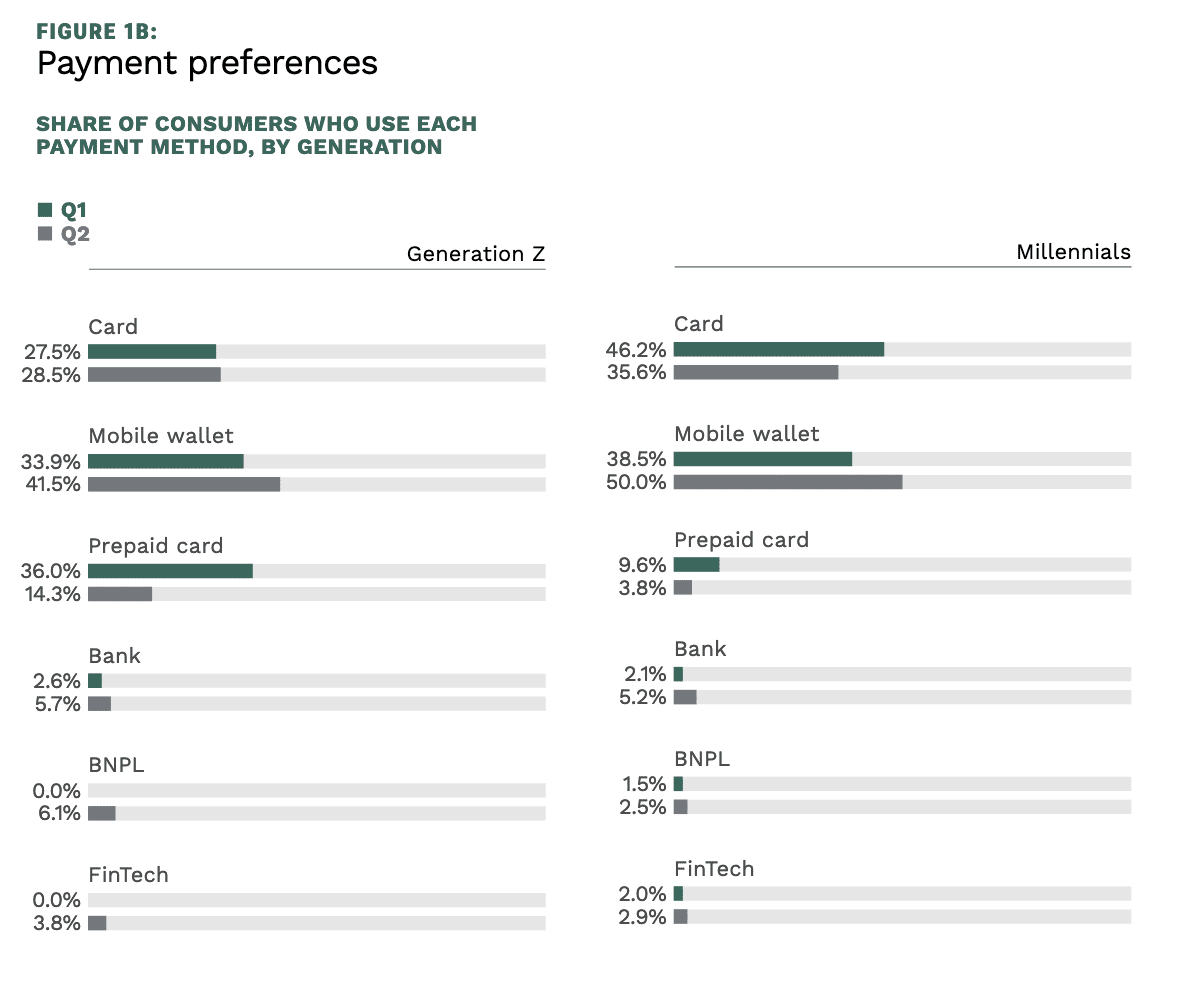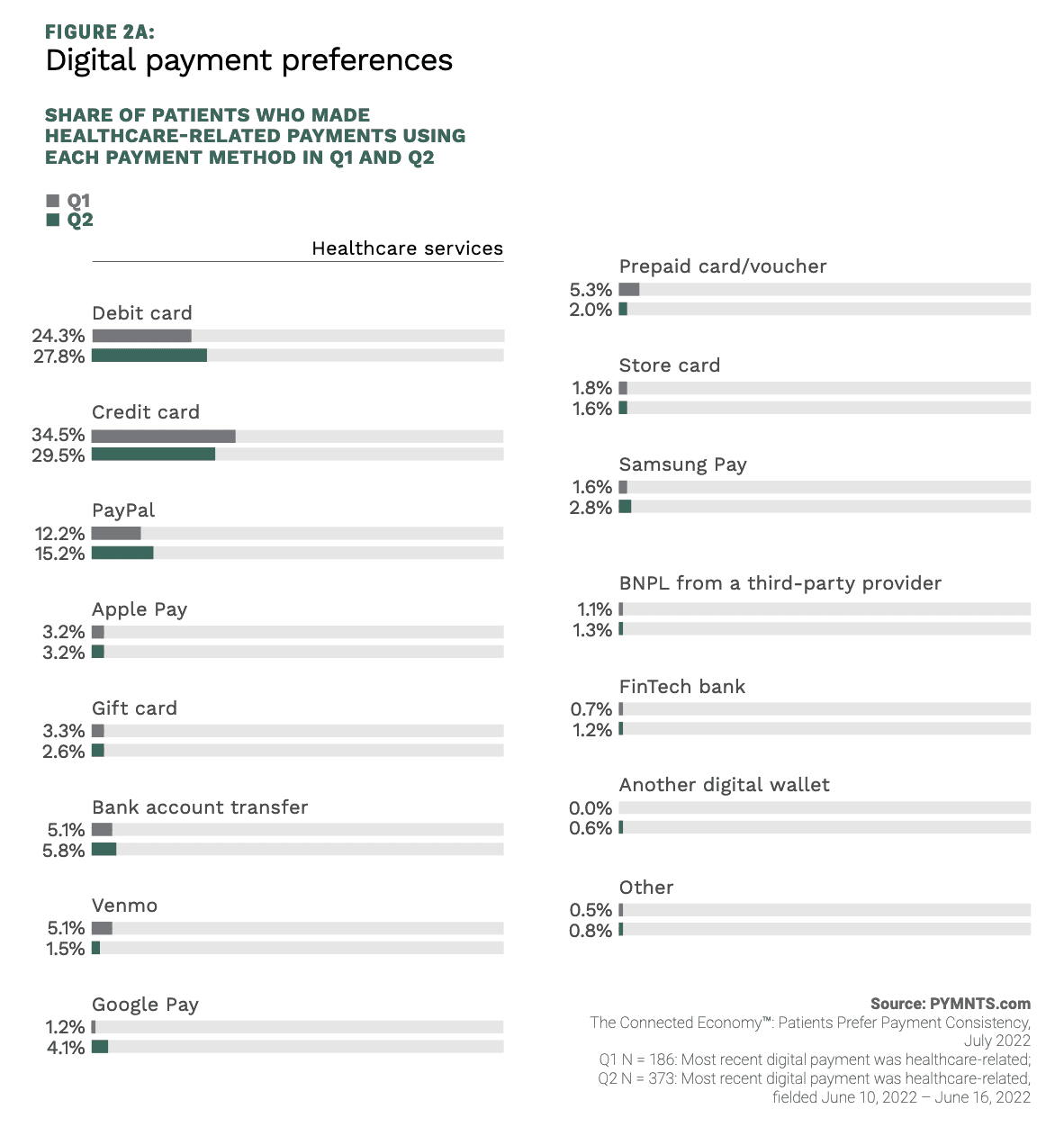Millennial Minute: When It Comes to Paying the Doctor, Half Now Use Mobile Wallets

How different demographics handle paying medical expenses today says a great deal about where greater payments volumes are likely headed in the near future — vital information in the push to digitize healthcare payments.
For the study “The ConnectedEconomy™: Patients Prefer Payment Consistency,” a PYMNTS report with research sponsored by CareCredit, we surveyed nearly 2,800 consumers and found that generational variation in payments preference provides a roadmap for the ongoing digital shift of healthcare providers.
Most notable among the findings is the widening split between how younger and older patients prefer to pay their medical expenses.
As the study states, “50% of millennials used a mobile wallet to pay for healthcare services during Q2, as did 42% of Gen Z — but just 8% of baby boomers used such a wallet. Conversely, nearly 82% of baby boomers and seniors used credit or debit cards to pay for their healthcare expenses in Q2.
“Given the rise in popularity of these tech-forward payment methods among younger generations, it makes sense for healthcare professionals to anticipate a future where these payment options are readily available.”
See It Now: The Connected Economy™: Patients Prefer Payment Consistency
 Drawing a Paycheck-to-Paycheck Line
Drawing a Paycheck-to-Paycheck Line
While boomers and seniors overwhelmingly prefer to pay for their care with cards, paycheck-to-paycheck status is also decisive in the form factor used.
“Those living paycheck to paycheck with issues paying bills were much more likely to use mobile wallet applications, such as PayPal, Apple Pay or Venmo, to pay for the care they received,” according to the study. “It is also notable that these patients are more likely to seek out less common payment methods, such as prepaid cards, buy now, pay later (BNPL) plans or arrangements with FinTechs.”
We hypothesize that the penchant for millennials and Gen Z consumers to use these digital-forward payment methods is associated with more people in these demographic groups living paycheck to paycheck and struggling to meet monthly expenses.
Looking at the wider picture, 30% of patients used credit cards to pay healthcare costs online, while 28% of patients used debit cards and 15% used PayPal.
Interestingly, we found that “payment preferences generally stay consistent when consumers purchase other goods and services, although consumers are often more likely to use debit cards rather than credit cards when purchasing retail goods or groceries and more likely to use credit cards when paying for healthcare costs.
“The numbers are still very close: 26% of consumers use debit cards to pay for healthcare costs, 27% use debit to pay for retail goods, and 37% use debit to pay for groceries.”
 Get Your Copy: The Connected Economy™: Patients Prefer Payment Consistency
Get Your Copy: The Connected Economy™: Patients Prefer Payment Consistency
